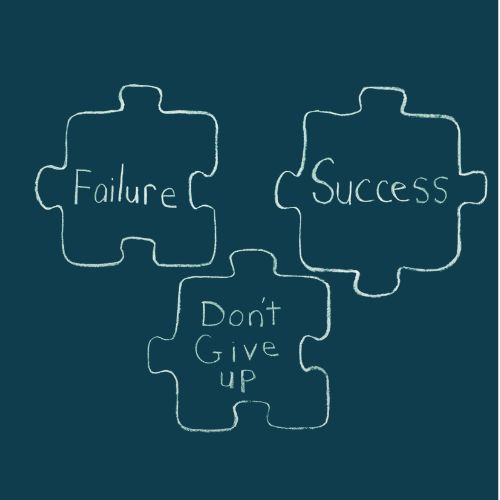
Understanding Zero Waste: How to Get Started
The zero-waste lifestyle is about more than just reducing the amount of trash you generate—it’s about rethinking how you consume resources, minimizing waste at every stage, and promoting sustainability. The goal is to send as little as possible to landfills, recycling centers, or incineration by adopting practices that prioritize reuse, repair, and composting. This guide will explain what zero waste means and offer practical tips for getting started on your zero-waste journey, one step at a time.
What is Zero Waste?
Zero waste is a philosophy and lifestyle that aims to reduce the amount of waste we generate. The idea is to design systems and habits that allow us to maximize the use of resources and minimize the need for disposal. Instead of throwing things away, zero waste encourages rethinking the life cycle of products to ensure they are reused, repurposed, or composted.
At its core, zero waste is about the 5 Rs: Refuse, Reduce, Reuse, Recycle, and Rot. By focusing on these principles, we can lower our environmental impact and conserve natural resources.
Why Adopt a Zero Waste Lifestyle?
The average person generates a significant amount of waste every year, much of which ends up in landfills or pollutes oceans. This waste contributes to greenhouse gas emissions, depletes natural resources, and causes environmental damage. By moving toward a zero-waste lifestyle, you can help reduce your carbon footprint, protect ecosystems, and promote a circular economy where resources are used efficiently and waste is minimized.
Getting Started with Zero Waste
Transitioning to a zero-waste lifestyle doesn’t happen overnight. It’s a gradual process that involves rethinking your habits, making mindful choices, and finding alternatives to single-use and disposable items. Here are some practical steps to help you get started.
Step 1: Assess Your Current Waste
Before you can make meaningful changes, it’s important to understand how much waste you currently produce and where it comes from. Start by conducting a simple waste audit:
- Track Your Waste: Over the course of a week, take note of everything you throw away. This includes food scraps, packaging, plastic items, paper, and more.
- Identify Major Sources: Identify which items are the most common in your trash. Are you throwing away a lot of single-use plastic, food packaging, or paper towels? Knowing the main contributors to your waste will help you prioritize where to make changes.
Step 2: Refuse Unnecessary Items
The first principle of zero waste is to refuse things you don’t need. This includes avoiding disposable items, freebies, and unnecessary packaging.
- Say No to Single-Use Items: Refuse items like plastic straws, cutlery, and cups when offered. Instead, bring your own reusable alternatives.
- Avoid Excess Packaging: When shopping, opt for products with minimal packaging or buy in bulk to reduce waste. Carry your own containers to refill with dry goods or household products.
- Decline Freebies: Many events and promotions offer free items that often go unused and eventually end up in the trash. Politely refuse these items unless you know you’ll use them.
Step 3: Reduce What You Need
The next step is to reduce your consumption by being more mindful of what you buy and use.
- Adopt Minimalist Practices: Focus on purchasing only what you truly need and avoid impulse buying. This not only reduces waste but also saves money.
- Opt for Quality over Quantity: Invest in durable, high-quality products that last longer, reducing the need for replacements.
- Declutter Regularly: Regularly assess your belongings and donate or sell items you no longer need. Reducing clutter helps you use resources more efficiently.
Step 4: Reuse What You Can
The third principle of zero waste is to reuse items as much as possible. By reusing items, you extend their life cycle and reduce the demand for new products.
- Choose Reusable Products: Replace single-use items with reusable alternatives, such as stainless steel water bottles, cloth shopping bags, and glass food containers.
- Repurpose and Repair: Get creative with items you already have. Repurpose old jars as storage containers or upcycle clothing into cleaning rags. Repair broken items whenever possible instead of buying new ones.
- Thrift and Swap: Instead of buying new, shop at thrift stores or participate in clothing and item swaps. This reduces demand for new goods and keeps items in circulation.
Step 5: Recycle Responsibly
While recycling is an important part of zero waste, it should be seen as a last resort after reducing and reusing. Many items that are recyclable don’t actually get processed due to contamination or lack of facilities, so it’s crucial to recycle properly.
- Know What Can Be Recycled: Familiarize yourself with your local recycling guidelines. Not all materials can be recycled, and contamination can cause an entire batch of recyclables to be discarded.
- Clean Recyclables: Rinse containers before placing them in the recycling bin to avoid contamination.
- Recycle Electronics and Hazardous Materials: Don’t throw out old electronics, batteries, or chemicals. Find designated recycling programs for these items in your area to ensure they are disposed of safely.
Step 6: Compost Organic Waste
The final step in a zero-waste lifestyle is to compost organic waste. Composting diverts food scraps and other biodegradable materials from landfills and turns them into nutrient-rich soil.
- Start a Compost Bin: Set up a compost bin at home for food scraps like fruit and vegetable peels, coffee grounds, and eggshells. If you don’t have outdoor space, indoor composting options like worm bins are available.
- Compost Yard Waste: Leaves, grass clippings, and other yard waste can be composted along with food scraps, reducing the amount of organic material sent to landfills.
- Use the Compost: Once your compost breaks down, use it in your garden or houseplants to enrich the soil, completing the cycle of resource use.






